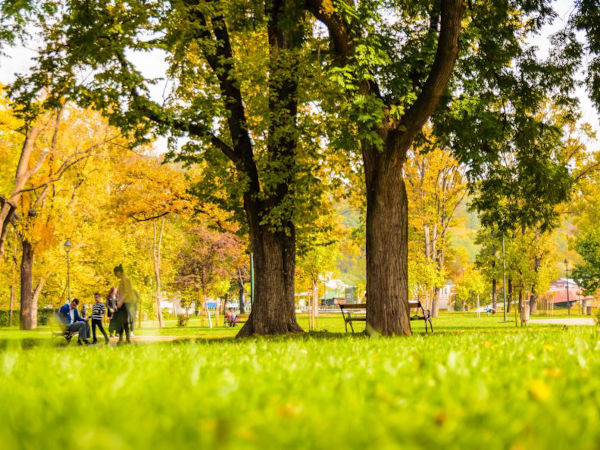Finding Home Through Poignant Landscapes
Large numbers of people in the world are immigrants. People relocate their homes for employment, for their children’s future, or for lifestyle changes. People also relocate in order to flee disasters, oppression, or violence. Therefore, the idea of home doesn’t necessarily mean a place of permanence. We strive to make the place we live in become home. Yet, to feel totally at home within a place is not all that common in our present-day world. We are almost always seeking a mythical home elsewhere…an ideal, in the future or in another dimension. Why? Perhaps we cannot feel at home in ourselves. Perhaps, as humans, we have trouble understanding our own belongingness.
This post is an excerpt, with edits, from Chapter 4 of my PhD Dissertation “Nature, Self, and Being in the World.” A similar essay can be found in my book Poignant Landscapes: Reflections on Pain, Beauty, Belonging, and Being Human.
Seeking transcendence
To see the world as sacred, an initial breakthrough of thought that transcends beyond the visible and the deducible needs to occur. However, this step of transcendence can also lead to binary thinking if it is taken too far. Transcendence, as one landscape architect I had interviewed explained, often leads to assumptions of “this is profane, and that’s sacred”.
Using the example of a Japanese garden, he explained how a landscape, sacred or profane, is just “an expression of who we are.” He says that landscape is where “you give yourself more opportunity to become aware of your relationship[s]…You enter a gate through the boundary, and you feel a difference between what’s inside and what’s outside, because you’ve given yourself the opportunity. You are no less sacred outside than you are inside.”
He then cautioned on the need to find sacredness elsewhere:
[James Hillman] speaks about the problem we’ve created for ourselves and the Earth with the notion of transcendence, suggesting the wish to be elsewhere rather than paying attention to…the sacredness of what we have here. He lists 5 or 6 different notions of transcendence. He says that’s probably one of the biggest causes for the environmental difficulties we’ve had. We don’t care enough about what we have here. We wish it away to be in this pure land. Elsewhere. Then the Buddhisagar says, “Well, dear. The pure land is right here.”
The pure land is home, and for many reasons, we are almost always seeking it. Why? Perhaps because we do not feel at home. Perhaps we, as humans, do not feel belonging. Therefore, the need to transcend to another world is the tension between the need to find home and the inability to feel at home exactly where we are.

Wandering and fleeing
According to Stephen Jenkinson (2015), human populations historically “wandered” across the planet: from Africa, along the coasts of the Middle East and South Asia, into Australia; following the mountains across Asia to the Americas; and along the coasts of the Mediterranean into and around Europe. These ancestral nomads did not move because they were forced to, but instead, they “collaborated” with the places they lived in.
They moved with the wind, the water, and the animals. In other words, they belonged with the Earth’s processes.
There is a difference between wandering and fleeing. As Jenkinson states, “Wandering is a way of being at home in the world that doesn’t require forty acres and a mule, and fleeing is a way of losing your home, your forty acres and your mule, and being driven across the face of the world” (248).
Totally being at home in the world does not necessitate having possessions and an attachment to a plot of land. But being at home in the world requires the feeling of belongingness, either to a community, to the land, to the Earth, or to the cosmos. Belongingness requires a sensitivity to all elements of a place. Sensitivity to place also means sensitivity to the people who have come to a place, whether as a result of wandering or fleeing.
Who is worthy of belonging?
Contemporary landscape architecture’s fixation with native species, for the interview participant, can be seen as a philosophical parallel to the “non-native” people seeking and making new homes in new places. But rigid ideas of what should be in a place, who should be in a place, and how to control a place, disregards the fact that notions of place, nature, and human beings are originally overlapping and fluid.
Therefore, arguments about “living with nature” are usually made with too little nuance. As the interview participant put it, we bring our landscapes with us when we come from another place. We change, and therefore, nature changes too, because “we are the operations of nature. Inside and outside are the same thing.”
So if we are the operations of nature, how much is the native/non-native plant discourse a by-product of human society’s tendency to judge people and their right to belong in a place?
If I was metaphorically a plant, would I be dismissed in landscape designs due to my non-native status? Or does having lived decades in Canada enough to be “naturalised” as a “Canadian plant”?
But what about my parents who have never managed to “naturalise” and adapt to the English language or many North American standards? What about new immigrants who come into the country?
And fundamentally, can we ever find home if place has to be tied to where we were born, where our ancestors resided, or even where our physical residence is located?
To be honest, I had always had reservations about the native plant movement because I fully understood how that discussion mirrored my non-native status in my supposed Canadian “home”. But I don’t want to make bold claims that the native/non-native plant discourse is tied to (post-)colonialist thinking. However, I can certainly say that each time the topic comes up, I do feel a sense of not belonging.

Poignant landscapes tell us that we belong
Fortunately, our relationship with landscapes can surpass the judgements of social discourse. As humans, we have opportunities to feel belonging even in places outside of our place of residence. For example, one landscape architect I interviewed recalled how her acquaintance found solace in the landscapes of Nova Scotia despite being a resident of Waterloo, Ontario. She described the conversation they had:
I had said to her, “I know [my research on coastal landscapes] won’t be a major interest to you because you’re not a coastal person.” [But] she said, “I am offended. I am so offended. I live in Waterloo [but] when my son’s wife died…I needed some time. What did I do? My friend had a cottage on the North coast of Nova Scotia, and I went there for a month. I went there. I sat on the promontories. I walked the beaches, and I sat in the fog…I let the landscape heal me, and I own that landscape. It’s Canadian. It’s mine. Just because I live in Waterloo, doesn’t mean that’s not an important space to me.” She humbled me, and I think that that word poignant comes in there, where it’s not a designed or created or crafted landscape. It’s just a space that speaks to people emotionally.
The conversation had humbled the interview participant. She realised that poignant landscape experiences are not bound by human-constructed jurisdictions. A poignant landscape doesn’t mean “a designed or created or crafted landscape [but more of] a space that speaks to people emotionally.”
In this case, the Waterloo resident felt a connection with the coastal landscape of Nova Scotia. She claimed the landscape as rightfully hers. Simultaneously, the landscape embraced her and healed her. She felt belonging in the landscape. A poignant landscape experience, therefore, can be considered as a moment of a finding home to belong to.
Finding home in-between fear and compassion
Many people experience homesickness when they have travelled away from home for some time, but in moments of extraordinary trepidation, home becomes especially necessary.
One of the most poignant encounters for the previous quoted landscape architect was her experience of being trapped in rural Labrador for work during the 911 terrorist attack. Satellite communication to the region was shut off shortly after the community first saw CNN coverage of the collapsing World Trade Towers. She claimed that the scenario felt similar to an Armageddon—not knowing what was going on with the rest of the world, and not knowing if she would be able to see her loved ones again.
In that moment, the need for home was profound. The awareness of one’s place in the world was even greater. She reflected on her experience and what it meant to not be able to return to a familiar landscape:
That sense of needing to be a part of the landscape that I lived in, and being isolated from everything else, that was a pretty profound moment. I don’t think many people get to experience that in our cultures in North America today. I think many refugees, many people who are fleeing strife, who lose their families and significant events, they go through this. But most of us [in North America] live pretty comfortable lives. Our parents went through wars, but we for the most part didn’t. So, it just puts a different focus on who you are in the greater scheme of things.
The experience was made poignant for her because within the dread, there was also love and compassion. The Naskapi Innu community had taken her in for the evening. The next morning, she was accompanied on foot for hundreds of kilometers along the coast of Labrador to a port where she was able to take a ship home to her extended family in Gander, Newfoundland.
We belong at home on Earth
This landscape architect found her yearning for home in a frightening situation poignant. Her acquaintance found healing in a landscape poignant. Yet, both landscapes where places that the individuals felt belonging. In essence, a place is where we want to create belonging or have felt belonging.
Most of us, if not all humans, want to make the place we are in become home, figuratively, whether it is a transient place to find healing, or a stable place to settle down roots. But for certain, there is one home that we all share: Earth. Therefore, the quintessential home that human beings want to belong in is our earthly home. We want to feel our worthy existence as human beings in this home.
Finding home requires us to feel welcomed and to be supported. Being at home requires us to feel that we have a right to exist. Yet, if we find ourselves in a society that is devoid of authentic culturing, if economic growth is valued over emotional and spiritual growth, and if every person who looks or thinks differently is considered an “other,” not much belongingness can exist in our experience of the world.
In the context of home being a sense of belonging, poignant landscapes are the experiences that remind us that we indeed do always belong.

References:
Jenkinson, Stephen. 2015. ‘So Who Are the Dying to You? Who Are the Dead?’ In Die Wise: A Manifesto for Sanity and Soul. Berkeley: North Atlantic Books.





